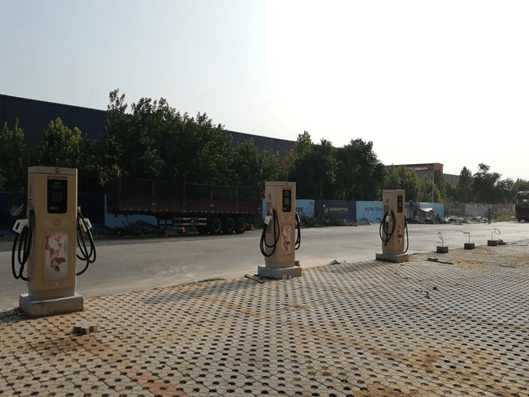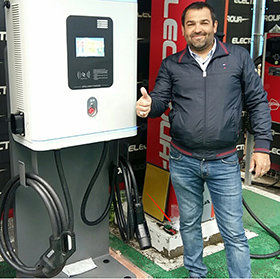The Ministry of Industry and Information Technology (MIIT) is now vigorously promoting the goal of full electrification of vehicles used in the public sector under the Action Plan to Promote the Electrification of Vehicles in the Public Sector. According to the relevant plan, by 2035, China's public sector vehicles will be fully electrified and fuel cell vehicles will be commercially available.

To this end, the Ministry of Industry and Information Technology is preparing to further promote electrification in buses, urban logistics vehicles, sanitation and cleaning vehicles and other areas. The authorities will also initiate the declaration of pilot cities for the full electrification of the public sector and, in conjunction with the Ministry of Finance and other relevant departments, study incentive support policies to effectively drive private consumption with the electrification of the public sector.
The first to benefit from the electrification of the public sector are the new energy bus companies. According to tramway statistics, in 2020, among the TOP 10 groups of new energy buses, Yutong sold 1.5 million units, with a market share of 26.2%, a slight decrease year-on-year, but the volume far exceeded other enterprises, and the leading position remained unchanged; the market share of second-tier head enterprises grew: Golden Dragon, China Motor and BYD benefited from the growth of their multi-location subsidiaries, and their market share grew significantly; Ankai and Shenwo achieved growth by virtue of their territorial markets; correspondingly, the Zhongtong, Foton and Guangtong were challenged, with market share declining to varying degrees.
In the first quarter of this year, among the top 10 new energy bus groups, except for Yutong, Jinlong and Foton, whose sales declined, all other manufacturers achieved year-on-year growth, with Zhongtong, BYD and China Auto registering significant growth in market share, still maintaining the market pattern of "one over many"; the "investment for market" manufacturers led by BYD and Yinlong performed better, with Guangzhou Auto BYD, Tianjin BYD, Zhuhai Guangtong and Nanjing Guangtong registering significant growth in sales.
In fact, the need for investment in the public sector is seen very clearly by the leaders of the authorities.
In his keynote speech at the 2020 China Automotive Forum, Ma Chunsheng, Deputy Director of the Automotive Development Division of the Department of Equipment Industry of the Ministry of Industry and Information Technology, pointed out that under the situation of accelerated development of new energy vehicles worldwide, increasing external competition and growing market pressure, promoting the electrification of vehicles in the public sector is of great practical significance in driving and expanding the consumption of new energy vehicles and promoting energy conservation, emission reduction and green development in the automotive industry.
Ma Chunsheng stressed that the application of car and energy network after electrification may be more convenient; in addition to charging later can also feed, energy storage and the interaction of new energy vehicles and new energy, renewable energy, for the development of the whole industry will extend a very large number of capabilities. For the new round of technological change, intelligence and electrification provide a new model for autonomous driving, which is an inevitable choice in terms of the internal logic of the development of new energy vehicles.
In short, by promoting the electrification of vehicles in the public sector, the construction of infrastructure related to new energy vehicles will be driven and the demand for new energy vehicle consumption will be boosted.
The data released by the State Information Center 2020 shows that the utilization rate of automotive capacity has been low since 2018, and the utilization rate of China's automotive capacity fell to a low of 76.8 percent in the first three quarters of 2019, down 3.8 percent from the same period in 2018, and the utilization rate of automotive capacity had previously been higher than the overall manufacturing capacity utilization rate, while it has now fallen to be on par with it. Compared to the normal range of capacity utilization rate of 79% to 83%, 76.8% means that China's auto capacity utilization rate has fallen below the "full line" and the overall capacity is in excess.
Compared to traditional fuel cars, the problem of excess capacity of new energy vehicles is even more serious, as the total planned capacity of new energy vehicles is close to 20 million units, which is 10 times the target of 2 million units of new energy vehicles in 2020 set by the Medium and Long-term Development Plan of the Automobile Industry. The New Energy Vehicle Industry Development Plan (2021-2035) sets a target of 40% of total vehicle sales by 2030. With reference to the 25.31 million vehicle sales in 2020, the current planned production capacity of new energy vehicles will still be excessive in ten years' time.
Under such conditions, the demand for vehicles in the public sector can only act as a front-runner, allowing the public sector to fully realise the goal of electrification first and prioritise the absorption of new energy vehicle capacity.
Also very important is the need for carbon peaking and carbon neutrality targets. At the Central Economic Work Conference, the goal of striving to peak China's CO2 emissions by 2030 and achieve carbon neutrality by 2060 was proposed. Before that, President Xi Jinping also promised the international community that by 2030, China's carbon dioxide emissions per unit of GDP will drop by more than 65% compared to 2005, the share of non-fossil energy in primary energy consumption will reach about 25%, and the total installed capacity of wind and solar power will reach more than 1.2 billion kilowatts.
The automotive industry has a difficult task in achieving the goal of carbon peaking and carbon neutrality. At present, China's automobile industry has already turned to the direction of electrification, and the "Energy-saving and New Energy Vehicle Technology Roadmap 2.0" further confirms the development direction of "low carbonization, informationization and intelligence" of automobile technology, and puts forward six major goals for the development of China's automobile industry in 2035, the first of which is: the carbon emissions of the automobile industry will be reduced by 2028 before the national carbon emission reduction. The first one is: the carbon emissions of the automobile industry will reach the peak in 2028 ahead of the national carbon emission reduction commitment, and the total carbon emissions will drop by more than 20% in 2035 compared to the peak. To achieve these goals, it is necessary to promote the use of new energy vehicles on a large scale.
Luoyang Grasen Power Technology Co., Ltd is a professional AC home charger and DC fast charger EV supercharger manufacturer for 11 years in China, the charging connectors can be any two of CCS1/CCS2/CHAdeMO/GBT. Please enter our website for more information: https://www.grasen.com. Please send email to sales@grasen.com for inquiry.

-- Marcus Groll,A Charging Station Owner in UKRAINE
Start your EV charging station businesses with Grasen. For a no-obligation quote, hit the button below, fill in your details, and we’ll get back to you.
